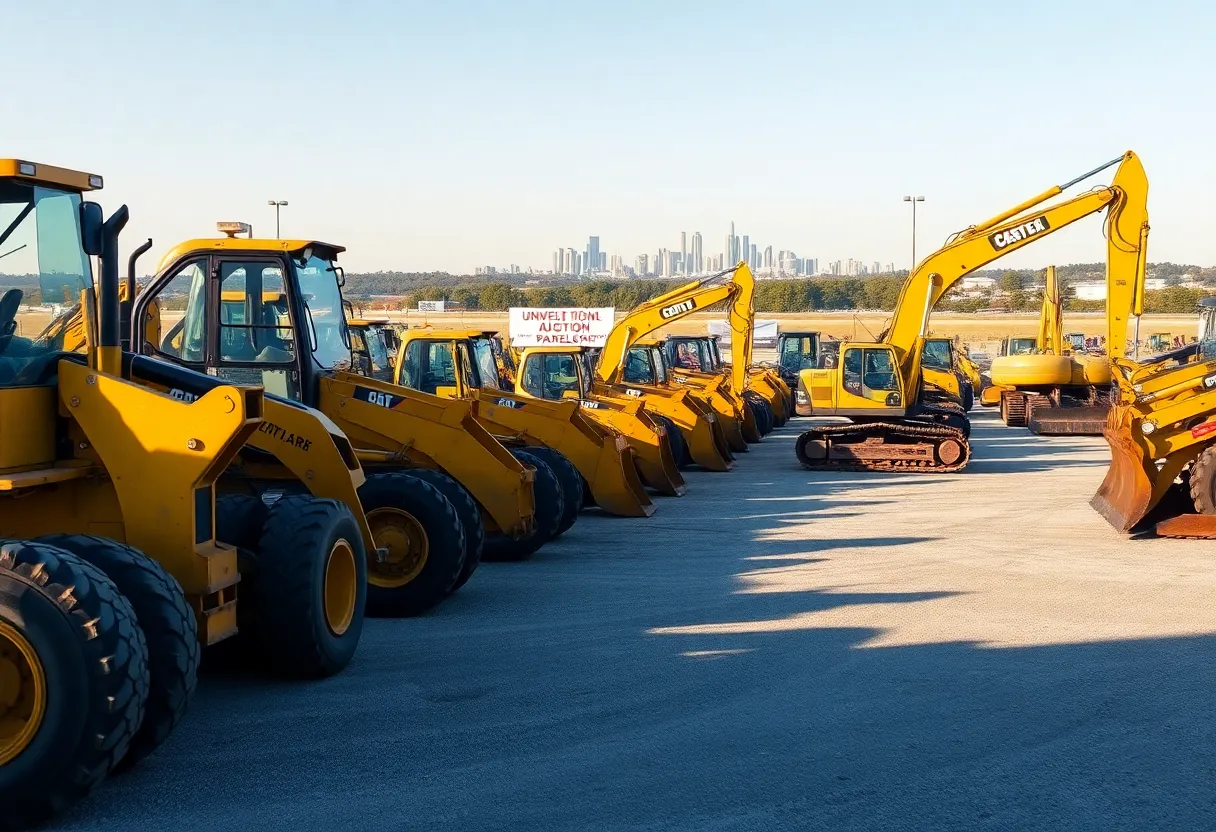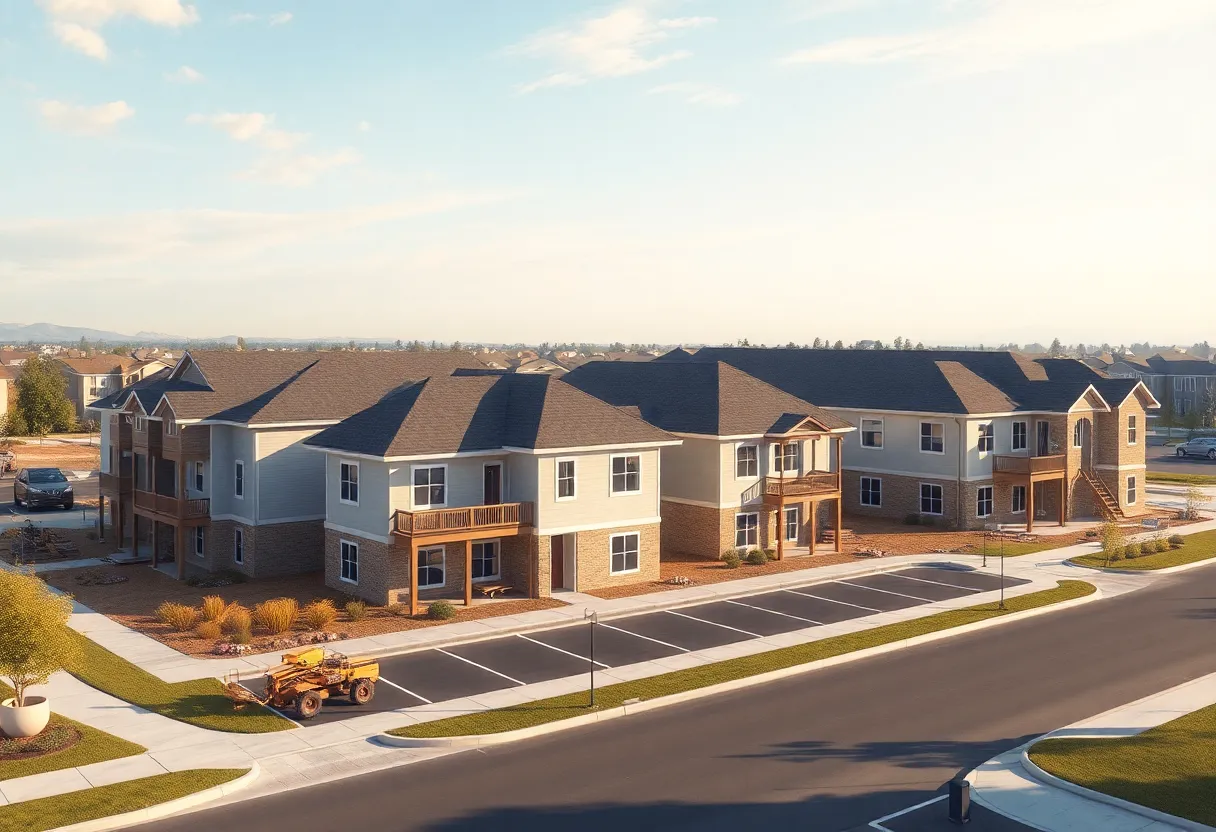Ann Arbor, Michigan, August 19, 2025
News Summary
Strong summer demand is shifting medium- and heavy-duty used construction equipment into rental fleets rather than dealer sales floors, prompting dealers to expand inventories and lenders to increase financing activity for projects of all sizes. Market values stayed largely stable in July, though dealers worry about a potential year-end glut when rental returns could flood lots and push more assets to auctions. Lenders report steady loan pipelines—from single-operator tools to heavy infrastructure machines—including recent multi-million-dollar deals. In Ann Arbor, rising home and rent pressures coincide with a new Green Rental Housing Ordinance requiring Asset Ratings and a proposed municipal rental portal.
Strong summer rental demand keeps used construction equipment off dealer lots and fuels lender activity; Ann Arbor wrestles with housing affordability and a new green rental rule
Used construction equipment is moving into rental fleets this summer, limiting what dealers offer for sale even as lenders spot steady financing opportunities. At the same time, municipal leaders in Ann Arbor continue to wrestle with escalating housing costs and a recently approved Green Rental Housing Ordinance that could reshape rental markets.
Market snapshot: rentals, lenders and stabilized prices
Industry data published in early August shows used equipment prices stabilized in July, with asking and auction values changing only marginally from June. Dealers across the country are responding to a summer construction boom by expanding rental inventory for medium- and heavy-duty machines to meet short-term contractor needs. That move is keeping units off dealer sales lots and shifting the mix of available units for buyers.
Dealers are preparing for a possible wave of rental returns at yearend. Many in the sector view auctions as the most efficient route to clear returned rental fleets if a glut appears, since auctions give end users a chance to inspect many running machines in sequence and select what fits their needs. The growing emphasis on rentals may be suppressing retail sales in some markets even as lenders continue to underwrite used-equipment deals.
Lenders see steady demand and financing windows
Financiers report a steady application flow covering a broad range of equipment sizes and prices, including larger-ticket purchases. Where large public infrastructure projects are under way, financiers see continued demand for scrapers, wheel loaders and other heavy gear. One lender noted a recent completed loan near $1.45 million for a family-owned operation, illustrating that sizable financing packages are still moving in the used market.
Smaller operators are also active: single-operator irrigation outfits are buying trenchers, while companies involved in large-scale road and utility work are acquiring specialized support vehicles. The combination of ongoing public works, short-term rental needs and cautious price movement has created a financing environment where lenders can place a range of loans while watching for seasonal return volumes.
Operational implications for dealers and contractors
For dealers, expanding rental fleets offers steady revenue and a way to keep inventory moving, but it raises calendar risk. If many rentals return at the same time, dealers may need to rely heavily on auction channels or targeted retail campaigns to avoid lot congestion. For contractors, rentals continue to be a practical option for short-term projects or when immediate capital outlay is a concern.
Ann Arbor: affordability strains and a new energy-focused rental rule
In Ann Arbor, housing affordability has tightened as prices and rents rise. Local data point to average home values around $527,000, and even vacant neighborhood lots can sell for hundreds of thousands of dollars. One-bedroom rents that had been cited as affordable are now commonly above $1,700 a month in many listings, prompting residents and officials to seek new approaches to help renters.
Voices from the community describe a range of coping strategies: negotiated rent reductions after initial sticker shock, household pooling to split costs, and turnover between semesters that affects prices for students. City leaders recently discussed creating a municipal website to aggregate rental listings and highlight smaller, independent landlords, in part to broaden renter access and offer information about tenant rights and complaint procedures.
The Green Rental Housing Ordinance and the debate over costs
The city council unanimously approved a new ordinance aimed at improving energy efficiency in rental housing. The ordinance requires landlords to meet an Asset Rating before routine rental inspections, achievable either through a prescriptive checklist or a third-party energy rating system. Noncompliance can threaten rental licensing and carries civil fines and prosecution costs under the draft enforcement structure.
Supporters argue the ordinance will lower long-term tenant energy bills and improve comfort, while critics warn that upfront upgrades could raise operating costs and push rents higher, potentially limiting options for students and low-income residents. Some housing advocates and policy analysts say mandates such as all-electric system requirements can add tens of thousands in initial costs, which landlords may pass on to renters. City officials counter that the ordinance is designed to be attainable and that improving efficiency is part of addressing both affordability and climate goals.
What this means going forward
For the construction equipment market, the short-term outlook points to continued rental demand through the busy season, a stable price environment for used machines, and steady lender engagement—especially where infrastructure spending keeps heavy equipment in regular use. For Ann Arbor, rising household costs and new rental standards mark a period of policy experimentation, with the balance between immediate affordability and long-term energy savings at the center of debate.
Key takeaways
- Rental fleets are growing: Dealers favor rentals to meet summer demand and limit retail inventory.
- Lenders remain active: Financing spans small trenchers to multi-million-dollar used-equipment loans.
- Price stability: Used-equipment asking and auction values showed only marginal month-to-month change in July.
- Ann Arbor tensions: High housing costs and a green rental ordinance place pressure on renters and landlords alike.
Frequently Asked Questions
How are dealers responding to summer demand for construction equipment?
Dealers are expanding rental fleets to meet short-term contractor needs, keeping many used units off retail lots and reducing the supply available for purchase.
Are used equipment prices rising or falling?
Recent industry data indicate prices have largely stabilized, with only marginal changes in asking and auction values between June and July.
Will lenders finance used equipment during this period?
Yes. Lenders report steady application flow across equipment sizes, including larger-ticket financings tied to infrastructure projects.
What is the Green Rental Housing Ordinance in Ann Arbor?
The ordinance sets energy-efficiency benchmarks for rental properties, requiring landlords to achieve a qualifying rating before routine inspections and tying compliance to licensing and fines for violations.
How might the ordinance affect renters?
Advocates say it can lower tenant energy costs and improve living conditions; critics warn it could increase landlords’ upfront costs and lead to higher rents, affecting affordability.
Key features at a glance
| Topic | Current status | What to watch |
|---|---|---|
| Used equipment pricing | Stable month-to-month | Yearend rental returns could alter supply and prices |
| Dealer strategy | Growing rental fleets, fewer units for sale | Reliance on auctions to clear returned rental units |
| Lender activity | Steady applications; large and small loans | Infrastructure projects sustaining demand for heavy equipment |
| Ann Arbor housing | Rents and home values elevated; rental stock majority | Impact of green energy rules on costs and affordability |
| Green Rental Ordinance | Approved; enforces Asset Rating and compliance | Administrative rollout, compliance costs, and rent impacts |
Deeper Dive: News & Info About This Topic
Additional Resources
- MLive: Some of the highest rent — Ann Arbor’s lack of affordability under scrutiny
- Wikipedia: Housing affordability
- The Michigan Daily: Ann Arbor City Council passes Green Rental Housing Ordinance
- Google Search: Ann Arbor Green Rental Housing Ordinance
- WXYZ: City of Ann Arbor to launch website that helps renters find more housing options
- Google Scholar: municipal rental portal
- MLive: Landlords warn rents may rise as Ann Arbor OKs green rental housing law
- Encyclopedia Britannica: Rental housing
- Michigan Capitol Confidential: Ann Arbor mulls green energy mandates as housing costs soar
- Google News: Ann Arbor green energy mandates housing costs





